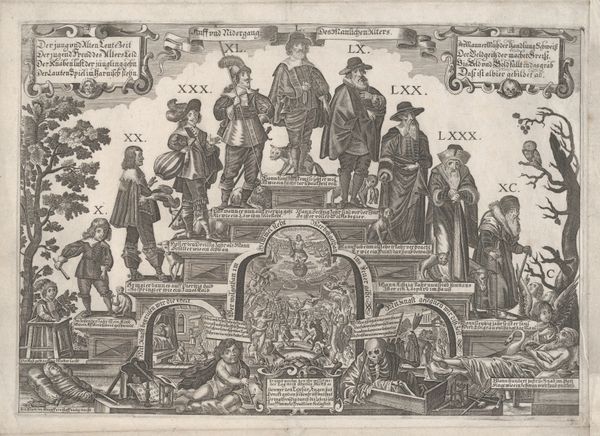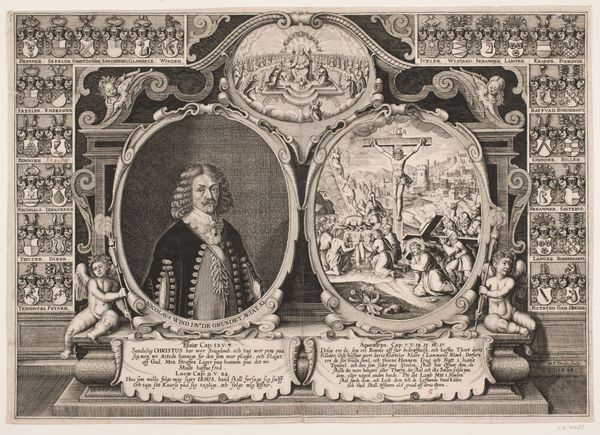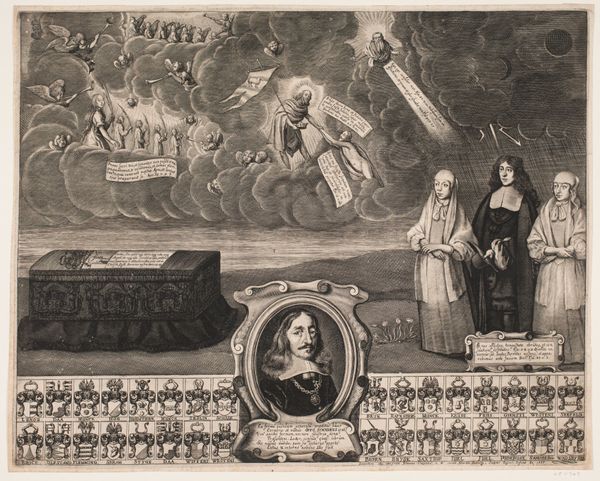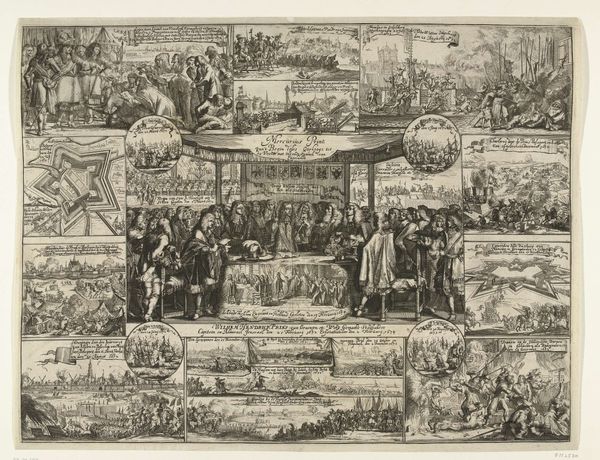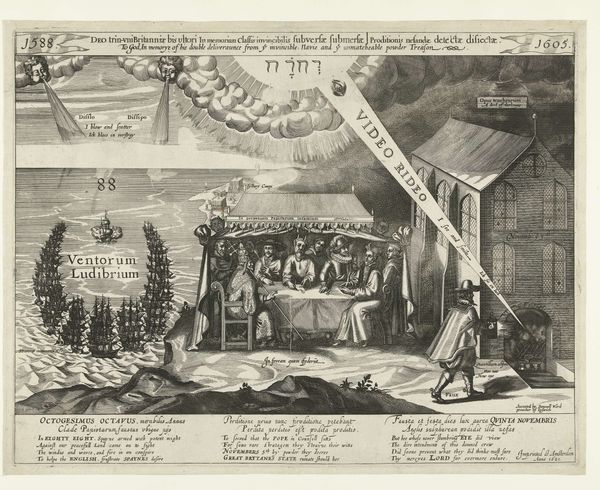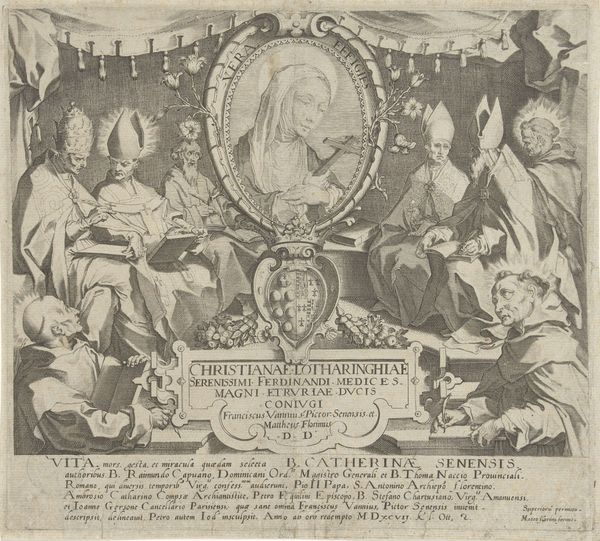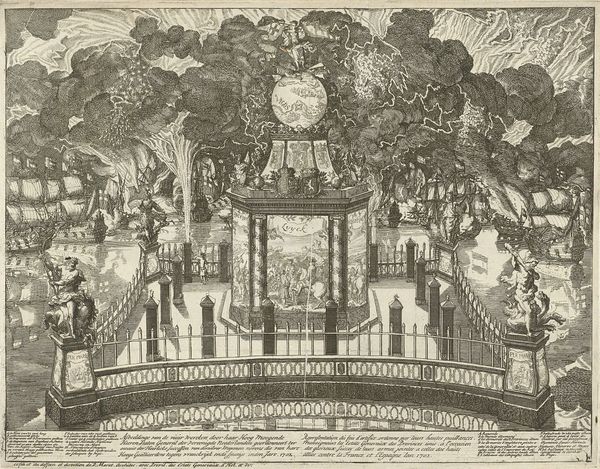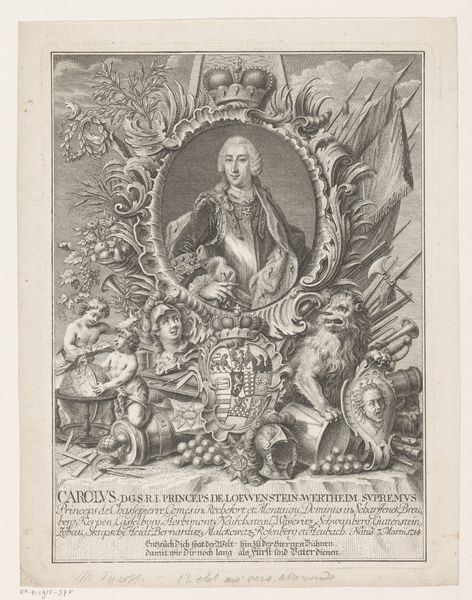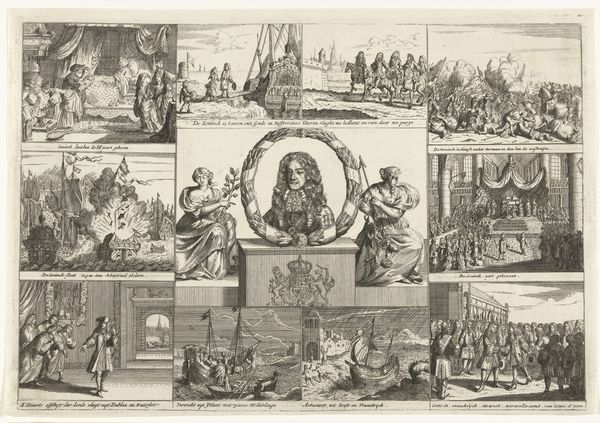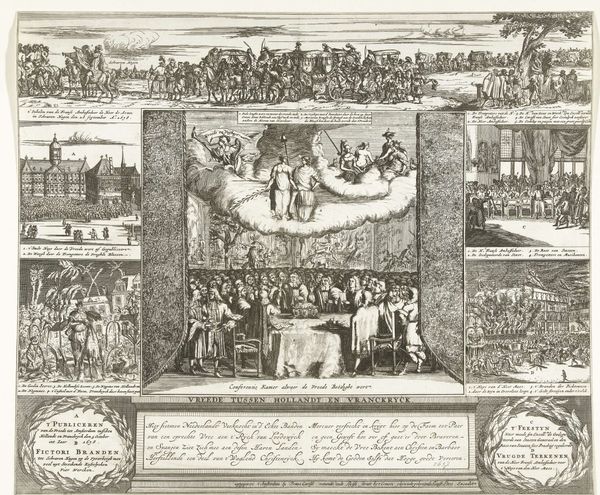
Gregers Krabbe til Torstedlund omgivet af allegoriske fremstillinger og aneskjolde 1655 - 1657
0:00
0:00
print, engraving
#
portrait
#
allegory
#
baroque
#
pen drawing
# print
#
figuration
#
line
#
history-painting
#
engraving
Dimensions: 295 mm (height) x 380 mm (width) (bladmaal)
Hans Andreas Greys created "Gregers Krabbe til Torstedlund omgivet af allegoriske fremstillinger og aneskjolde," a detailed work using ink on paper, sometime between 1642 and 1656. The composition is a complex layering of allegorical scenes framed by heraldic shields. This creates a dense visual field that demands careful decoding. Greys employs a hierarchical structure. The portrait of Gregers Krabbe sits centrally, flanked by symbolic depictions of family, virtue and divine favor. Each element is meticulously rendered, contributing to the overall sense of order and prestige. The use of symmetry and heraldic devices reinforces a rigid social structure and the importance of lineage. However, the detailed allegories resist simple interpretation. Greys destabilizes fixed meanings, inviting viewers to consider the interplay between personal identity, social role, and divine mandate. This tension speaks to the complex cultural codes of the period. The linear precision and structured composition serve not just as aesthetic choices but as powerful declarations of social and philosophical order.
Comments
No comments
Be the first to comment and join the conversation on the ultimate creative platform.


